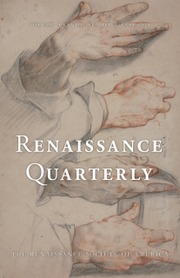Throughout his entire career, Clément Marot composed letters to communicate with members of the French court and other contemporaries, share personal details, and express his religious beliefs. By making all these epistles available in English for the first time, Robert Hudson’s book offers a literary biography of a court poet directly involved in the religious turmoil and cultural accomplishments of Francis I’s reign. The introduction gives an overview of Marot’s life and places his work in the religious and literary context of the day. Hudson is aware of the difficulty of dating several poems and events, yet his chronological organization of the epistles intends to stress Marot’s constant search of new kinds of self-expression within a literary tradition. A Janus-like author, Marot looked simultaneously backward and forward, as recent commentators have noted. His letters adopted and adapted medieval and classical themes and genres, competed with the grands rhétoriqueurs’ technical virtuosity while also paving the way for Du Bellay’s and Ronsard’s poetics. In addition to the verse epistles included in the Oeuvres (1538) and in other books published during Marot’s life, Hudson provides translations of the poet’s introductory prose epistles to the 1532 and 1538 editions of the Adolescence clémentine, as well as translations of new epistolary forms with which he experimented, such as the coq-à-l’âne.
With poetry, there is always a great deal to be lost in translation even when one does not stray far from the original. Hudson’s explicit ambition is to “always sound like Marot.” He successfully faces the challenge of reconciling word-by-word and line-by-line accuracy with readability to convey something of the elegant simplicity and musicality of Marot’s conversational style. One senses a translator in deep sympathy with his subject. Each translated epistle is set to verse, with the same rhyme scheme and meter as the original version. The result is a translation that feels both true to its sources and pleasing to a modern reader.
A frequent complaint of instructors has been the lack of translation of Marot’s poetry. Hudson’s book partially fills this gap and is also a critical edition of Marot’s epistles. Short contextual notices preface each piece; ample footnotes give additional background information, helpful insight into the French text, and references to secondary sources when needed. Hudson provides a chronological table of biographical, historical, and literary events contemporary to the epistles, and a concordance with the major French editions of Marot’s work along with an up-to-date bibliography of selected secondary sources. Clarity and sympathy are the guiding principles of this book, which will be of interest to students and scholars alike.



